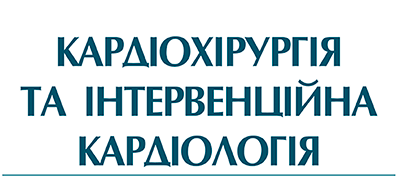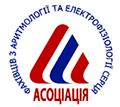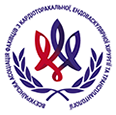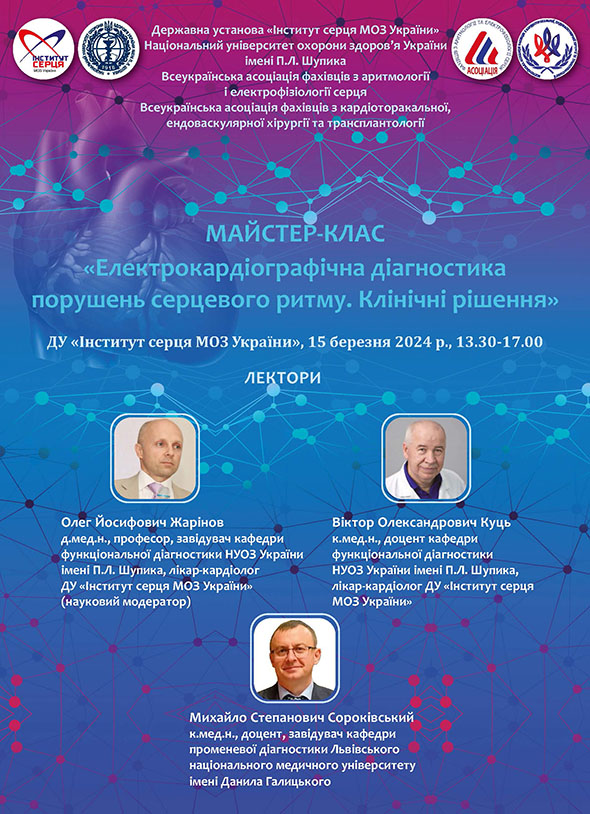Маркери запалення до і після аортокоронарного шунтування та ефективність статинів
О.Й. Жарінов, О.А. Єпанчінцева, І.В. Шклянка, А.І. Курченко, Б.М. Тодуров
Література
1. Gusev DE, Ponomar EG. The role of C-reactive protein and other markers of the acute phase of inflammation in atherosclerosis. Clinical medicine. 2006;5:25-30. (in Rus.).
2. Zykov MV., Barbarash OL., Karetnikova VN., Kashtalan VV. The use of biomarkers - cytokines in the diagnosis and prognosis of myocardial infarction: Methodological recommendations. Kemerovo, 2012:7-16. (in Rus.).
3. Karpov YuA., Sorokin EV. Atherosclerosis and inflammation factors: non-lipid mechanisms of statins action. Rus. Med. J. 2001;9(10):5-9. (in Rus.).
4. Mirolyubova OA, Dobrodeeva LK, Averina M, et al. The role of cytokines and apoptosis in the development of post-perfusion syndrome after open-heart surgery with artificial circulation.Kardiologiia. 2001;41(1):67-69. (in Rus.).
5. Nasonov EL, Pashokova EV, Aleksandrova EN. C-reactive protein - marker of inflammation in atherosclerosis (new data). Kardiologiia. 2002;7:53-62.
6. Naumov VG, Sumorokov AB, Ezhov MV, et al. The indices of chronic inflammation in patients with ischemic heart disease with the development of restenosis in the coronary stent. Kardiologiia. 2005;1:14-18. (in Rus.).
7. Shreyder EV, Shakhnovich RM, Kaznacheeva EI, et al. Prognostic value of inflammatory markers and NT-proBNP in various treatment options for patients with acute coronary syndrome. Kardiologicheskij Vestnik. 2008.(III, 2):44-53. (in Rus.).
8. Antoniades C, Demosthenous M, Reilly S, et al. Myocardial Redox State Predicts In-Hospital Clinical Outcome After Cardiac Surgery: Effects of Short-Term Pre-Operative Statin Treatment. J Amer Coll Cardiology. 2012;59(1):71-73.
9. Ascione R, Lloyd CT, Underwood MJ, et al. Inflammatory response after coronary revascularisation with or without cardiopulmonary bypass. Ann Thorac Surg. 2000;69:1198-1204.
10. Athyros VG, Papageorgiou AA, Mercouris BR, et al. Treatment with atorvastatin to the National cholesterol educational program goal versus "usual" care in secondary coronary heart disease prevention: The GREek Atorvastatin and Coronary-heart-disease Evaluation Study(GREACE). Cur Med Res Opin. 2002;18:220-228.
11. Black S, Kushner I, Samols D. C-reactive protein. J Biol Chem. 2004;279:48487-48490.
12. Brull D. J, Sanders J, Rumley A, et al. Statin therapy and the acute in flammatoryresponse after coronary artery bypass grafting. Am J Cardiol. 2001;88:431-433.
13. Casadei B, et al. Perioperative statin treatment in cardiac surgery for the prevention of atrial fibrillation and perioperative myocardial damage: the Statin Therapy in Cardiac Surgery(STICS) trial. ESC Congress. Hotline. 2014;2.
14. Chello M, Anselmi A, Spadaccio C, et al. Simvastatin increases neutrophil apoptosis and reduces inflammatory reaction after coronary surgery. Ann Thorac Surg. 2007;83:1374-1380.
15. Chello M, Mastroroberto P, Patti G, et al. Simvastatin attenuates leucocyte-endothelial interactions after coronary revascularisation with cardiopulmonary bypass. Heart. 2003;89:538-543.
16. Christenson JT. Preoperative lipid control with simvastatin reduces the risk for graft failure already 1 year after myocardial revascularization. Cardiovasc Surg. 2001;9:33-43.
17. Collard CD, Body SC, Shernan SK, et al. Preoperative statin therapy is associated with reduced cardiac mortality after coronary artery bypass graft surgery. J Thorac Cardiovasc Surg. 2006;132:392-400.
18. Dotani MI, Elnicki DM, Jain AC, Gibson CM. Effect of preoperative statin therapy and cardiac outcomes after coronary artery bypass grafting. Am J Cardiol. 2000;86:1128-1130.
19. Entman ML, Smith WC. Postreperfusion inflammation: a model for reaction to injury in cardiovascular disease. Cardiovasc. Res. 2010;28:1301-1311.
20. ESC/EACTS Guidelines on myocardial revascularization. Eur Heart J. 2014;35(37):2541-2619.
21. Franke A, Lante W, Fackeldey V, et al. Pro-inflammatory cytokines after different kinds of cardio-thoracic surgical procedures: is what we see what we know. Eur J Cardiothorac. 2005;28:569-575.
22. Frostegard J, Bennet A.M, Wiman B, et al. Association of ФНП-alpha serum levels and ФНПA promoter polymorphisms with risk of myocardial infarction. Atherosclerosis. 2006;187:408-414.
23. Gerola LR, Oliveira SA, Moreira LFP, et al. Blood cardioplegia with warm reperfusion versus intermittent aortic crossclamping in myocardial revascularization: randomized controlled trial. J Thorac Cardiovasc Surg. 1993;106:491-496.
24. Gottsauner-Wolf M, Zasmeta G, Hornykewycz S, et al. Plasma levels of C-reactive protein after coronary stent implantation. Eur Heart J. 2000;21:1152-1158.
25. Hennein HA, Ebba H, Rodriguez JL, et al. Relationship of the proinflammatory cytokines to myocardial ischemia and dysfunction after uncomplicated coronary revascularization. J Thorac Cardiovasc Surg. 2004;108:626-635.
26. Klein DJ, Briet F, Nisenbaum R, et al. Endotoxemia related to cardiopulmonary bypass is associated with increased risk of infection after cardiac surgery: a prospective observational study. Crit Care. 2011;15:69.
27. Krivoy N, Adler Z, Saloma R, et al. Targeting C-reactive protein levels using high-dose atorvastatin before coronary artery bypass graft surgery. Exp Clin Cardiol. 2008;13(4):171-174.
28. Laufs U, Adam Oliver. Acute effects of statins. J Am Coll Cardiol. 2012;59(1):71-73.
29. Levy JH, Tanaka KA. Inflammatory response to cardiopulmonary bypass. Ann Thorac Surg. 2003;75:715-720.
30. Luesher TF, Vanhoutte PM. The Endothelium: modulator of cardiovascular function. Boca Raton. 2000:1-228.
31. Marin F, Pascual DA, Roldan V, et al. Statins and postoperative risk of atrial fibrillation following coronary artery bypass grafting. Am J Cardiol. 2006;97:55-60.
32. Martakova L, Olejarova I, Danova K, et al. Cytokine levels in patients with a very low left ventricular ejection fraction after open heart surgery. Bratisl Lek Listy. 2001;102(12):548-551.
33. Menasché P. The systemic factor: the comparative roles of cardiopulmonary bypass and off-pump surgery in the genesis of patient injury during and following cardiac surgery. Ann Thorac Surg. 2001;72:2260-2266.
34. Minxin W. Kuukasjärvi P. Cytokine responses in low-risk coronary artery bypass surgery. Intern J Angiology. 2001;10(1):27-30.
35. Mitchell LB, Exner DV, Wyse DG, et al. Prophylacticoral amiodarone for the prevention of arrhythmias that begin early after revascularization, valve replacement, or repair. JAMA. 2005;294:3093-3100.
36. Moyer CF, Sajuthi D, Tulli H, Williams JK. Synthesis of IL-1 alpha and IL-1 beta by arterial cells in atherosclerosis. Amer. J. Pathology. 1991;138:951-960.
37. Nader ND, Javadzadegan H, Nezami N, et al. High-sensitivity C-reactive protein(hs-CRP) and tumor necrotizing factor-alpha(TNF-alpha) after on- and off- pump coronary artery bypass grafting. HSR Proc. Intensive Care Cardiovasc. Anesth. 2010;2(1):27-33.
38. Ohashi Y, Kawashima S, Mori T, et al. Soluble CD40 ligand and interleukin- 6 in the coronary circulation after acute myocardial infarction. Intern J Cardiol. 2006;112(1):52-58.
39. Ozaydin M, Dogan A, Varol E, et al. Statin use before by-pass surgery decreases the incidence and shortens the duration of postoperative atrial fibrillation. Cardiology. 2007;107:117-121.
40. Pan W, Pintar T, Anton J, et al. Statins are associated with a reduced incidence of perioperative mortality after coronary artery bypass graft surgery. Circulation. 2004;110:45-49.
41. Patti G, Chello M, Candura D, et al. Randomized Trial of Atorvastatin for Reduction of Postoperative Atrial Fibrillation in Patients Undergoing Cardiac Surgery: Results of the ARMYDA-3. Circulation. 2006;114:145-1461.
42. Pinon P, Kaski JC. Inflammation, atherosclerosis and cardiovas-cular disease risk. Rev Esp Cardiol. 2006;59:247-258.
43. Pim van der Harst, Voors AA, Volbeda M, et al. Usefulness of preoperative c- reactive protein and soluble intercellular adhesion molecule 1 for redicting future cardiovascular events after coronary artery bypass grafting. Am J Cardiol. 2006;97:1697-1701.
44. Powell BD, Bybee KA, Valeti U, et al. Influence of preoperative lipid-lowering therapy on postoperative outcome in patients undergoing coronary artery bypass grafting. Am J Cardiol. 2007;99:785-789.
45. Preeshagul I, Gharbaran R, Kyung H.J, et al. Potential biomarkers for predicting outcomes in CABG cardiothoracic surgeries. J Cardiothoracic Surgery. 2013;8:176.
46. Rakhit RD, Seiler C, Wustmann К, et al. Tumor necrosis factor and interleukin-6 release during primary percutaneous coronary intervention for acute myocardial infarction is related to coronary collateral flow. Coron Artery Dis. 2005;16(3):147-152.
47. Ridker PM, Cannon CP, Morrow D, et al. Pravastatin or Atorvastatin Evaluation and Infection Therapy-Thrombolysis in Myocardial Infarction 22(PROVE IT-TIMI 22) Investigators. C- reactive protein levels and outcomes after statin therapy. New Engl J Med. 2005;352(1):20-28.
48. Ridker PM, Cushman M, Stampfer MJ, et al. Inflammation, aspirin, and the risk of cardiovascular disease in apparently healthy men. New Engl J Med. 1997;336:973-979.
49. Ridker PM, Morrow DA, Rose LM, et al. Relative efficacy of atorvastatin 80 mg and pravastatin 40 mg in achieving the dual goals of low-density lipoprotein cholesterol < 70 mg/dl and C-reactive protein < 2 mg/l: an analysis of the PROVE-IT TIMI-22 trial. J Am Coll Cardiol. 2005;45(10):1644-1648.
50. Ridker PM, Rifai N, Pfeffer MA, et al. Inflammation, pravastatin, and the risk of coronary events after myocardial infarction in patients with average cholesterol levels. Cholesterol and Recurrent Events (CARE) Investigators. Circulation. 1998;98:839-844.
51. Ridker PM, Danielson E, Fonseca FA, et al. Rosuvastatin to prevent vascular events in men and women with elevated C-reactive protein. New Engl J Med. 2008;359:2195-2207.
52. Sacks FM, Pfeffer MA, Moye LA, et al. For the Cholesterol and Recurrent Events Trial Investigators. The effect of pravastatin on coronary events after myocardial infarction in patients with average cholesterol levels. New Engl J Med. 1996;355:1001-1009.
53. The effect of aggressive lowering of low-density lipoprotein cholesterol levels and low-dose anticoagulation on obstructive changes in saphenouse-vein coronary-artery bypass grafts. The Post Coronary Artery Bypass Graft Investigartors. New Engl J Med. 1997;336:153-162.
54. Tsuyuki RT. Revascularization in patients with heart failure. CMAJ. 2006;175(4):361-365.
55. Tuzcu EM, Nissen SE, Schoenhagen P, et al. Reversal of Atherosclerosis with Aggressive Lipid Lowering(REVERSAL) Investigators. New Engl J Med. 2005;352(1):29-38.
56. Wan S, DeSmet JM, Barvais L, et al. Myocardium is a major source of proinflammatory cytokines in patients undergoing cardiopulmonary bypass. J Thorac Cardiovasc Surg. 2006;112:806-811.
57. Wan S, LeClerc JL, Vincent JL. Inflammatory response to cardiopulmonary bypass: mechanisms involved and possible therapeutic strategies. Chest. 2007;112:676-692.
58. Woods A, Brull DJ, Humphries SE, Montgomery HE. Genetics of inflammation and risk of coronary artery disease: the central role of interleukin-6. Eur Heart J. 2000;21:1574-1583.
59. Zych B, Pacholewicz J, Farmas A, et al. Operacje kardiochirurgiczne przetoczenia krwi i środków krwiopochodnych. Kardichir Torakochir Pol 2004;1:31-40.
| [PDF] | [Зміст журналу] |












